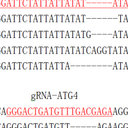Pediatric ovarian malignancy presenting as ovarian torsion: incidence and relevance.
Từ khóa
trừu tượng
OBJECTIVE
With ovarian torsion, concern for underlying malignancy in the enlarged ovary has previously driven surgeons to resection. Detorsion alone has been recommended to allow for resolution of edema of the ovary with follow-up ultrasound surveillance to evaluate for a persistent mass, yet is not routine practice. However, the incidence of malignancies presenting as ovarian torsion is not documented. Does the risk of an underlying malignancy justify salpingoophorectomy and decreased fertility?
METHODS
After institutional review board exemption (IRB#-022008-095), a 15(1/2)-year retrospective review was conducted to identify cases of operative ovarian torsion in our medical center. Tumors with neoplastic pathology (malignant and benign) were analyzed and compared with all reported cases in the literature.
RESULTS
A total of 114 patients (mean +/- SEM age, 10 years, 2 days to 19 years +/- 0.53) with operatively proven ovarian torsion were identified. Four malignancies (3.5%) and 26 benign neoplasms (23%) were present in this age group. Malignancies consisted of serous borderline tumors (2), juvenile granulosa cell tumor (1), and dysgerminoma (1). All were stage I: the former were stage IA and cured with resection alone, and 1 was a stage IB dysgerminoma, which required chemotherapy. The literature yielded a total of 593 cases of operative ovarian torsion with 9 (1.5%) malignancies and 193 (33%) benign neoplasms. The malignancies were juvenile granulosa cell tumor (n = 4), dysgerminoma (n = 2), serous borderline tumors (n = 2), and 1 undifferentiated adenocarcinoma.
CONCLUSIONS
By combining our series with 13 in the literature, a 1.8% malignancy rate occurred in 707 patients with ovarian torsion, markedly less than the reported malignancy rate of 10% in children with ovarian masses. Thus, neither a pathologic nor malignant lead point should be assumed in cases of torsion. In our series, which represents the largest series of torsion in the pediatric literature, all malignancies presented as stage I. These data further support the implementation of operative detorsion and close postoperative ovarian surveillance, with reoperation for persistent masses. Further study is needed to determine if delaying resection by weeks in those cases of persistent masses would result in tumor progression and thus change prognosis.


